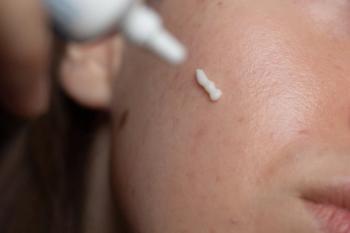
Sustaining Repigmentation in Vitiligo Requires Gradual Step-Down Approach, Says Gina Mangin, MPAS, PA-C
Key Takeaways
- Abrupt discontinuation of vitiligo therapy post-repigmentation can lead to relapse; gradual tapering is recommended.
- A step-down approach in treatment helps suppress memory T cell activity, reducing disease recurrence risk.
Ongoing maintenance therapy is essential to avoid relapse and preserve gains in repigmentation for patients with vitiligo, according to Gina Mangin, MPAS, PA-C.
At the 2025 Society of Dermatology Physician Associates Summer Dermatology Conference in Washington, DC, Gina Mangin, MPAS, PA-C, of Sand Lake Dermatology Center in Florida, shared actionable insights on long-term management of vitiligo during the session, “Vitiligo in Practice: Clinical Insights and Management.”
The talk, copresented with Archana Sangha, MMS, PA-C, and Dan Sturm, PharmD, was supported by Incyte Corporation and focused on strategies to support sustained disease control following successful repigmentation.
In an interview following the session, Mangin emphasized that one of the most common pitfalls in vitiligo care is the abrupt discontinuation of therapy once pigment has returned.
“The long-term treatment, management goals, [and] things I would recommend [are] that when I have my patients who have achieved repigmentation, it's not stopping their therapies cold turkey,” she said.
Instead, Mangin advocates for a step-down approach to minimize the risk of relapse. She often begins tapering therapy gradually over time.
“What I may do if they're on a topical, instead of using that topical twice a day or every day, we may cut down that topical eventually to 3 times a week, then to twice a week, and then usually on weekends only,” she said.
This kind of maintenance schedule may help suppress the activity of memory T cells, which are thought to contribute to disease recurrence. According to Mangin, this strategy has allowed her patients to maintain their results longer and feel more confident in their treatment plans.
“The key is going to be maintaining some type of treatment, to not allow that relapse to happen and to not allow those memory T cells to wake up,” she said.
By taking a proactive and personalized approach, dermatology clinicians can help patients with vitiligo achieve more stable and durable outcomes.
Make sure to keep up to date with the latest coverage from the conference and subscribe to Dermatology Times to receive daily email updates .
Newsletter
Like what you’re reading? Subscribe to Dermatology Times for weekly updates on therapies, innovations, and real-world practice tips.


















